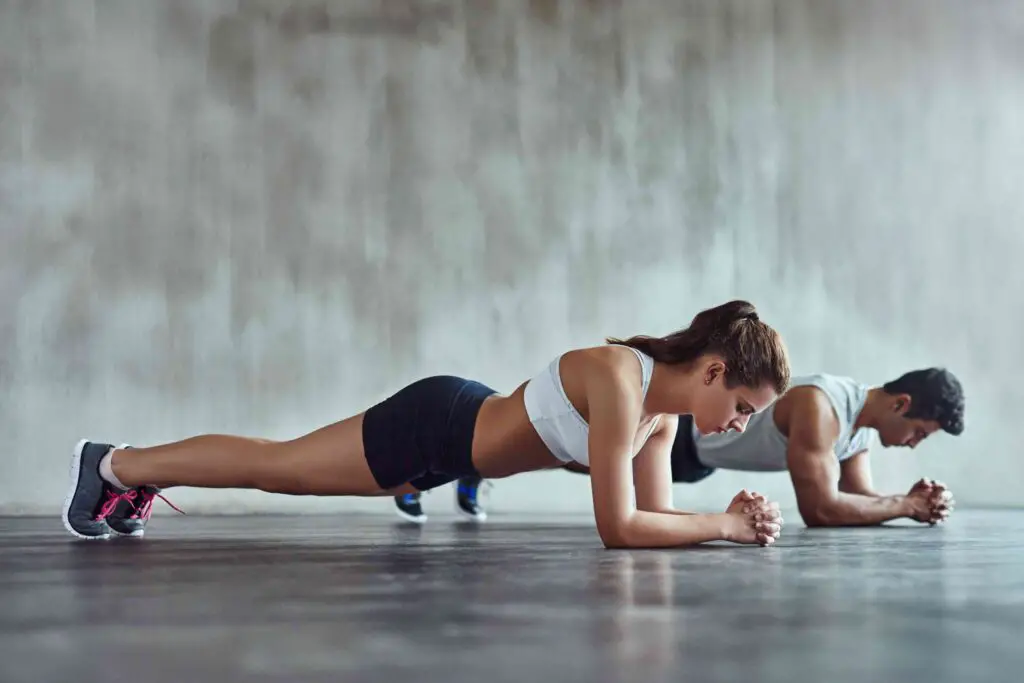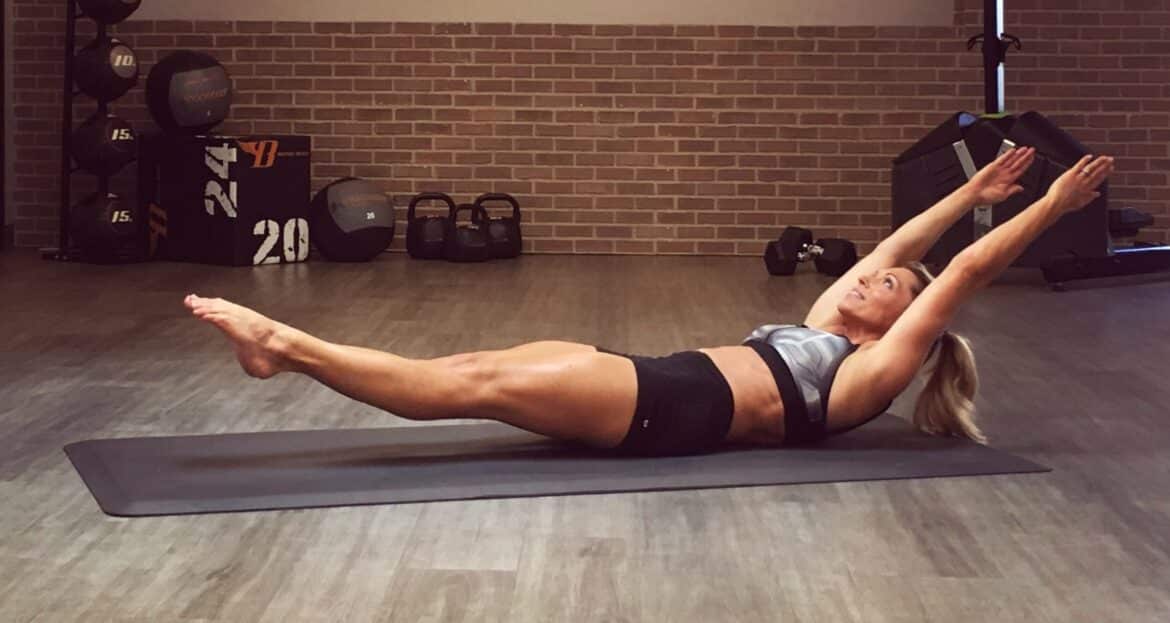Introduction
Are Calisthenics Good For Weight Loss: In an era where health and fitness have taken center stage, individuals across the globe are constantly seeking effective ways to shed those extra pounds and achieve their weight loss goals. Among the myriad of fitness trends and exercise routines, calisthenics has emerged as a popular and enticing option for those on a quest to lose weight and improve their overall physical health. Calisthenics, a form of bodyweight training that utilizes exercises like push-ups, squats, planks, and burpees, offers a unique approach to weight loss that appeals to both fitness enthusiasts and beginners alike.
The arises whether calisthenics is indeed a viable path to weight loss. This inquiry is significant in a world where fad diets and questionable workout regimes frequently leave individuals disheartened and skeptical about the effectiveness of various fitness methods. In this exploration, we will delve into the science and benefits of calisthenics as a weight loss tool, shedding light on why it has gained a reputation as a transformative fitness discipline.
Calisthenics, often referred to as “street workouts,” relies on the resistance of one’s own body weight to build strength, flexibility, and endurance. As such, it can be an excellent choice for those who aim to shed excess body fat and promote lean muscle growth. By engaging multiple muscle groups simultaneously, calisthenics workouts not only burn calories during the exercise itself but also elevate the resting metabolic rate, contributing to continued calorie burning long after the workout has concluded.

Can You Lose Weight With Calisthenics Workout?
The best option is to combine a healthy diet and exercise (7). Like any other type of exercise, calisthenics adds to your overall energy expenditure, thus promoting weight loss. As this type of training involves multiple muscle groups, it usually burns more calories than common cardio workout.
Calisthenics, a form of exercise that utilizes one’s own body weight to perform a variety of movements and exercises, has gained popularity for its accessibility and versatility. It includes exercises like push-ups, pull-ups, squats, planks, and more, all of which can be tailored to meet the specific needs and fitness levels of individuals. However, the efficacy of calisthenics as a weight loss tool hinges on several key factors, including the intensity of the workouts, the consistency of training, and the integration of a balanced nutrition plan.
This exploration aims to uncover the science behind calisthenics as a weight loss strategy and delve into the mechanisms by which it helps individuals shed unwanted pounds. Beyond the physical aspects, it will also consider the psychological and motivational aspects that make calisthenics an attractive choice for many.
One of the fundamental advantages of calisthenics is its capacity to burn calories and build lean muscle simultaneously. Compound movements engaged in calisthenics routines activate multiple muscle groups, resulting in a higher calorie expenditure during workouts. Moreover, these workouts can elevate the resting metabolic rate, leading to continued calorie burning even when not actively exercising.
Calisthenics also offers a dynamic and adaptable approach to fitness, accommodating various fitness levels and lifestyles. Whether you’re a beginner looking to initiate your weight loss journey or an experienced athlete seeking to intensify your workouts, calisthenics can be customized to suit your needs. Furthermore, it often requires little to no equipment, making it a cost-effective alternative to traditional gym memberships.
Is Calisthenics Better For Weight Loss Than Weights?
Calisthenic exercises involve more active movement than lifting weights, so more energy is required to get calisthenic exercises done. As a result, the body burns more calories and sheds more fat in the same amount of time.
The debate over whether calisthenics or weightlifting is superior for weight loss has been a longstanding discussion within the fitness community. Both approaches have their merits, and the choice between them often depends on individual preferences, goals, and fitness levels. To determine whether calisthenics is better for weight loss than weights, it is essential to examine the key factors involved in each approach.
Calisthenics, as a bodyweight exercise regimen, emphasizes functional movements that use one’s own body weight as resistance. This form of exercise can provide a holistic approach to weight loss by engaging multiple muscle groups simultaneously during compound movements such as push-ups, squats, and burpees. Calisthenics workouts are typically high-intensity and can lead to substantial calorie burning during the exercise session. Moreover, the increased muscle engagement can elevate the resting metabolic rate, resulting in additional calorie expenditure even after the workout has concluded. This combination of factors makes calisthenics a compelling choice for weight loss.
On the other hand, weightlifting, or resistance training, primarily involves the use of external weights or resistance machines to build muscle and strength. While weightlifting may not burn as many calories during a workout as calisthenics, it plays a crucial role in transforming body composition. Increasing muscle mass through weightlifting can boost the body’s metabolic rate over time, which can contribute to more efficient weight management. Additionally, weightlifting helps preserve lean muscle mass during weight loss, preventing muscle loss that can occur with caloric restriction.
Is Cardio Or Calisthenics Better For Weight Loss?
However, calisthenics can be a better choice compared to relying solely on traditional cardio when it comes to weight loss and overall fitness. That’s because calisthenics is a type of resistance training that engages multiple muscle groups at once. This means calisthenics WILL BUILD MUSCLE 💪 WHILE LOSING FAT.
The choice between cardio and calisthenics as a weight loss strategy is a common dilemma for those seeking to shed excess pounds and improve their overall fitness. Both approaches offer distinct benefits, and the decision ultimately depends on individual preferences, goals, and the overall fitness plan. To determine whether cardio or calisthenics is better for weight loss, it’s essential to understand the unique advantages each brings to the table.
Cardiovascular exercise, commonly referred to as “cardio,” includes activities like running, cycling, swimming, and brisk walking. These exercises are known for their ability to increase heart rate and breathing, leading to significant calorie expenditure during the workout. Cardio workouts are effective at burning calories, making them a staple in many weight loss programs. Additionally, sustained cardio activities can improve cardiovascular health, endurance, and stamina.
On the other hand, calisthenics, a form of bodyweight training, focuses on exercises that use one’s own body weight as resistance. Examples include push-ups, squats, lunges, and planks. Calisthenics offers a full-body workout, engaging multiple muscle groups simultaneously. While calisthenics may not burn as many calories during a single session as cardio, it contributes to lean muscle development. Muscle tissue burns more calories at rest than fat, thus increasing resting metabolic rate and aiding in long-term weight management.
Why Are Calisthenics Guys So Strong?
The functionality of calisthenic movements is another reason that these athletes are so strong when it comes to basic, weighted movements, such as the squat, bench, and deadlift. Another benefit of calisthenics, which Alex Bromley covered in the video, is that they force you to stay in shape, body fat wise.
Calisthenics enthusiasts, often referred to as “calisthenics guys” or “bar athletes,” are renowned for their impressive strength and physique. Their strength results from a combination of factors intrinsic to the calisthenics discipline, including the nature of bodyweight exercises, progressive overload, and dedication to specific training techniques. Here’s a closer look at why calisthenics practitioners tend to be so strong:
Bodyweight Exercises: Calisthenics primarily involves exercises that use one’s own body weight as resistance. Movements like pull-ups, push-ups, dips, and various forms of planks require individuals to lift and control their own weight. This constant resistance challenges and strengthens muscles effectively, leading to impressive strength gains over time.
Functional Strength: Calisthenics promotes functional strength, which means that the strength gained through these exercises is applicable to real-life movements. Unlike traditional weightlifting exercises that isolate specific muscle groups, calisthenics movements engage multiple muscle groups simultaneously, leading to more balanced and practical strength development.
Progressive Overload: Calisthenics emphasizes progressive overload, a fundamental principle of strength training. Practitioners continually challenge themselves by increasing the difficulty of exercises as they progress. This can involve adding more repetitions, increasing the range of motion, or performing advanced variations of exercises. This gradual progression ensures ongoing muscle adaptation and growth.
Body Control: Calisthenics requires a high degree of body control and stability. Exercises often involve balancing, controlling momentum, and mastering advanced body positions. This enhances not only physical strength but also proprioception and kinesthetic awareness.
Core Strength: Many calisthenics exercises heavily engage the core muscles for stability and control. This core strength is not only essential for advanced calisthenics movements but also for overall physical health and posture.
Should I Lose Fat Before Calisthenics?
If an overweight person decides to do calisthenics, there are a few tips and considerations: Losing weight is the first step. It’s important to introduce small lifestyle changes to help with losing weight. This will help with progression in calisthenics exercises.
Whether you should lose fat before beginning a calisthenics program depends on your individual goals, fitness level, and preferences. Calisthenics can be an effective tool for both fat loss and muscle building, so the decision should align with what you want to achieve.
Here are some considerations to help you make an informed choice:
Current Fitness Level: If you are significantly overweight or have health concerns related to excess body fat, it may be advisable to start with a general fitness and weight loss program before diving into calisthenics. Losing some weight through a combination of cardio, a balanced diet, and other forms of exercise can reduce the strain on your joints and make calisthenics exercises more manageable.
Overall Goals: Determine your primary fitness goals. If your main objective is to lose fat and improve cardiovascular health, incorporating cardio exercises and dietary changes may be more effective initially. Once you’ve made progress in reducing your body fat percentage and improving your fitness level, you can transition into calisthenics for muscle building and strength development.
Joint Health: Excess body weight can put additional stress on your joints, which can make certain calisthenics exercises challenging. Starting with weight loss can help alleviate some of this stress, making it easier and safer to perform calisthenics movements.
Body Composition: If you’re relatively close to your target body fat percentage and mainly want to improve muscle definition, you can certainly incorporate calisthenics into your routine from the beginning. Calisthenics can help you build lean muscle, which can aid in fat loss by increasing your resting metabolic rate.
Balanced Approach: In many cases, a balanced approach is the most effective. Combining cardiovascular workouts, strength training (including calisthenics), and a balanced diet can provide a comprehensive and sustainable path to both fat loss and muscle building.
How Should I Eat For Calisthenics?
This means that you should consume whole foods like lean proteins such as chicken, turkey, lean ground beef, beans and legumes, salmon, tofu, eggs, etc. Protein helps repair and build lean muscle after exercise. This will increase muscle mass and strength which is essential for progressing in calisthenics.
Eating for calisthenics, like any other fitness regimen, plays a crucial role in your performance, recovery, and overall results. To optimize your nutrition for calisthenics, consider the following guidelines:
Balanced Diet
Prioritize a balanced diet that includes a variety of whole foods. This should consist of lean proteins, complex carbohydrates, healthy fats, fruits, vegetables, and plenty of water. A balanced diet provides the necessary nutrients to support energy levels and muscle recovery.
Protein
Protein is essential for muscle repair and growth. Incorporate lean sources of protein like chicken, turkey, fish, lean beef, tofu, beans, and legumes into your meals. Aim to consume protein both before and after your calisthenics workouts to support muscle recovery.
Carbohydrates
Carbohydrates are your body’s primary source of energy. Consume complex carbohydrates such as whole grains, oats, brown rice, sweet potatoes, and quinoa to provide sustained energy for your workouts.
Fats
Healthy fats are vital for overall health and can provide sustained energy. Incorporate sources like avocados, nuts, seeds, and olive oil into your diet. Omega-3 fatty acids, found in fatty fish like salmon and flaxseeds, can help reduce inflammation and support joint health.
Hydration
Staying hydrated is essential for optimal performance. Drink plenty of water throughout the day, and consider sipping on an electrolyte-rich beverage during intense workouts to replace lost fluids.
Meal Timing
Timing your meals and snacks strategically can enhance your calisthenics performance. Have a balanced meal containing protein and carbohydrates about 2-3 hours before your workout to provide sustained energy. After your workout, consume a meal or snack within an hour to support muscle recovery.
Can An Overweight Person Do Calisthenics?
If you are overweight, know that you can lose fat with calisthenics, a fancy word for bodyweight exercises. This is a guide to calisthenics for overweight people and how to start it.
Absolutely, an overweight person can do calisthenics! Calisthenics is a versatile and accessible form of exercise that can be adapted to suit individuals of varying fitness levels and body sizes. In fact, calisthenics can be an excellent choice for overweight individuals who are looking to improve their fitness, lose weight, and build strength.
Here are some key points to consider if you’re overweight and interested in calisthenics:
Start Slowly: It’s important to begin at an appropriate level for your current fitness. Don’t push yourself too hard initially. Focus on mastering basic movements and gradually progressing to more advanced exercises as your strength and stamina improve.
Adapt Exercises: Many calisthenics exercises have variations that can accommodate different fitness levels. For example, if full push-ups are challenging, start with knee push-ups or incline push-ups using an elevated surface.
Focus on Form: Proper form is crucial to prevent injuries and maximize the effectiveness of your workouts. Take the time to learn and practice correct technique for each exercise.
Gradual Progression: Calisthenics is all about progression. Over time, you can increase the number of repetitions, the range of motion, or the difficulty of exercises to continue challenging yourself and building strength.
Listen to Your Body: Pay attention to your body’s signals. If you experience pain or discomfort, it’s important to stop and reassess your approach. Consult a fitness professional or physical therapist if you have concerns.
Combine with a Balanced Diet: Weight loss and overall health are not just about exercise; diet plays a significant role. Consider adopting a balanced and sustainable eating plan to complement your calisthenics workouts.
Set Realistic Goals: Set achievable goals that are specific, measurable, and time-bound. This can help you stay motivated and track your progress.
How Effective Are Calisthenics?
Calisthenics can contribute to improving a wide range of body functions, including cardiovascular health, gut health and heart health. It can improve mobility, reduce aches and pains, lower the risk of injury, prevent type 2 diabetes and enhance sleep quality.
Calisthenics is an exceptionally effective form of exercise for improving overall fitness, strength, and flexibility. Its effectiveness stems from several key factors that make it a popular choice among fitness enthusiasts and athletes:
Full-Body Workout
Calisthenics exercises engage multiple muscle groups simultaneously, providing a comprehensive full-body workout. This holistic approach helps individuals develop balanced strength and functional fitness.
Minimal Equipment
Calisthenics requires minimal or no equipment, making it accessible to people of all fitness levels and budgets. Many exercises can be performed using only body weight, which means you can do them virtually anywhere.
Strength Building
Calisthenics promotes strength gains by progressively increasing resistance through variations of exercises. As individuals master basic movements like push-ups and pull-ups, they can progress to more challenging variations, such as one-arm push-ups or muscle-ups.
Muscle Endurance
Calisthenics emphasizes muscle endurance by encouraging higher repetitions of exercises. This endurance not only improves muscular strength but also enhances stamina and cardiovascular fitness.
Functional Strength
The strength developed through calisthenics is functional, meaning it can be applied to real-life movements and activities. This makes calisthenics particularly useful for improving daily tasks and athletic performance.
Flexibility and Mobility
Calisthenics incorporates exercises that enhance flexibility and mobility, promoting better joint health and reducing the risk of injury. Movements like yoga push-ups and dynamic stretching routines are often included in calisthenics workouts.

Conclusion
Callisthenics proves to be a valuable and effective tool in the pursuit of weight loss and overall fitness. While the primary goal of calisthenics may not be solely focused on weight loss, it offers a multitude of benefits that contribute to a healthier, leaner physique.
Calisthenics workouts engage multiple muscle groups simultaneously, leading to substantial calorie expenditure during each session. Furthermore, these exercises promote muscle growth, which, in turn, elevates the resting metabolic rate, resulting in continued calorie burning even outside of workout sessions. This dual-action of burning calories and building lean muscle makes calisthenics a compelling choice for individuals aiming to shed excess body fat.
The adaptability of calisthenics routines is another key advantage. It accommodates individuals of various fitness levels, from beginners to advanced practitioners, allowing for a gradual progression in intensity and complexity. The minimal equipment required for calisthenics makes it an accessible and cost-effective alternative to traditional gym workouts, ensuring that individuals can engage in this form of exercise without the constraints of expensive memberships or specialized equipment.

